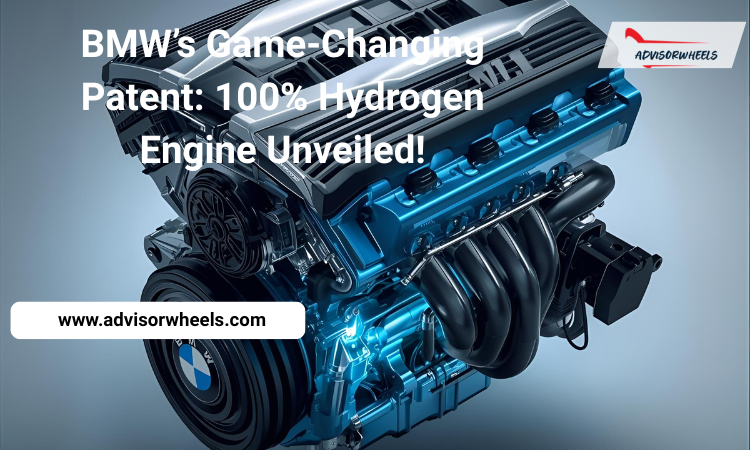India aims to have 30 percent of new vehicles on the road in 2030, which will be powered not by petrol/diesel. The majority believes that it will bring everything to battery electric cars. But Toyota, Hyundai, Tata, and currently BMW are placing billions of dollars on hydrogen. The latest spark? The new patent issued by BMW shows 100 percent hydrogen-powered engine, which burns hydrogen directly in a conventional combustion engine and produces no more than water vapour. The question then arises which technology will really dominate the highways and the city streets of India five years down the line? This is the straight-forward no-nonsense comparison.
Where We Stand in November 2025
Battery EVs are everywhere — over 1.8 lakh sold last year, thousands of chargers on highways, and home charging at ₹6–9 per unit. Hydrogen, on the other hand, is almost invisible: just two public stations (Delhi–Gurugram and Leh), a handful of Toyota Mirai and Hyundai Nexo on test fleets, and green hydrogen still costing ₹600–800 per kg.
Running Cost: The Shocking 2030 Flip
As of today, a Tata Nexon EV is 1.2-1.8 per kilometre in the home prices. A hydrogen Mirai would presently cost ₹67 per kilometre. With the National Hydrogen Mission, however, the green hydrogen prices are growing down at a rapid pace. By the year 2030, experts and the Reliance-Adani projects are projecting 200-250 per kg. When it costs that, a 650km hydrogen fill-up would reduce to 2.2-3 per kilometre -all at once competitive with electricity rates, and much cheaper than petrol or diesel.
Refuelling Speed Changes Everything
No number of fast chargers will be comparable to a 3-5 minute hydrogen fill of 600+ kilometres. Even 350 kW EV chargers require 1825 minutes to charge 80 percent in a 100 kWh vehicle even, and most Indian highway chargers are 50120 kW. To taxi drivers, tourist cabs and any other individual who travels to and from Mumbai-Pune-Bangalore, five minutes or forty will either be the difference between business or lose.
Range in Indian Conditions
EVs lose 30–40 % range when the mercury hits 45 °C or when climbing the ghat roads with the AC on full blast. Hydrogen vehicles lose only 5–10 %. The Indian Army already runs hydrogen prototypes in Leh at –25 °C without issues. Real-world highway range matters more in India than in Europe, and hydrogen currently wins.
Upfront Price: The Future Surprise
EVs are now less expensive due to FAME subsidies and reduction in taxes on batteries. Even in 202728 when the subsidies are fully removed, a huge 100 kWh EV would still require 1822 lakh of batteries alone. Instead, a hydrogen combustion car (such as the one recently patented by BMW) makes use of a small buffer battery and a 2-3 lakh hydrogen tank. Industry observers reckon that similar luxury sedans, and SUVs may be 5-8 lakh less expensive to produce using hydrogen burning in 2030.
Infrastructure Race
The government has committed ₹20,000 crore and targets 5,000 hydrogen stations by 2030. Gujarat, Odisha, and Uttar Pradesh already have gigawatt-scale green hydrogen plants under construction. Meanwhile, EV chargers are growing fast, but peak-hour grid load and transformer upgrades remain a headache outside big cities. Both networks will exist; the question is which one you will actually use.
Who Wins Which Segment by 2030?
Battery EVs will dominate short-hop city cars, two-wheelers, and budget buyers who charge overnight. Hydrogen — especially direct combustion engines — — will own long-distance taxis, premium SUVs, highways, and fleet operators who hate downtime. Toyota and BMW openly say hydrogen combustion preserves the driving feel and sound that luxury buyers love, something silent EVs can never match. Also read AdvisorWheels for more information.
Final Verdict for Indian Buyers
Unless you have to cover more than 100 km a day, and you will be able to charge your vehicle at home or at work, purchase a battery EV today and get ready to pay the lowest bills. Unless you already cover 400+ km every week, dislike waiting in the queue at the chargers, or need a large luxury SUV which can refuel in five minutes and still sound like a growling lion, wait till 2028-2030 when hydrogen models will be offered. The two technologies will co-exist but at the expiry of the decade, hydrogen will cease to be the underdog in Indian highways.


